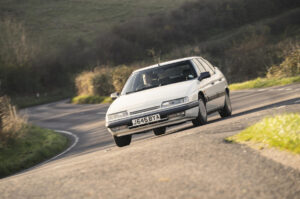Summary
- SkyRide actively controls body motion with hydraulics, adjusting up to 1,000 times per second for comfort and
- SkyRide integrates with steer-by-wire and braking systems, maintaining stability even during extreme events like tyre blowouts.
Nio’s SkyRide — built with Clearmotion — is being billed as the “world’s first fully integrated hydraulic fully active suspension.” Unlike adaptive dampers, SkyRide actively controls body motion using pressurised hydraulics and sensors, making adjustments up to 1,000 times a second to cut in-car motion by around 75% and add new safety and comfort functions.
What is active suspension (vs adaptive damping)?
- Adaptive damping varies damping force reactively (different driving modes / surfaces).
- Active suspension goes further: it uses actuators (hydraulics, electromagnetic devices, etc.) to move the body relative to the chassis when required — not merely resist motion.
- SkyRide is a hydraulic-based active system that supplements soft air springs rather than replacing them, so the car stays supported without the huge continuous energy draw that fully spring-less systems demand.
How SkyRide works — the tech in plain English
- Sensors gather data about speed, steering, road surface and imminent impacts.
- A hydraulic pump powers fast-acting servovalves/actuators at each corner.
- The active element adds or subtracts hydraulic force to control roll, pitch and vertical movement — actively shaping how the body moves rather than just damping it.
- The control unit executes adjustments at ~1,000 times per second, producing near-instantaneous corrections for bumps, undulations and cornering.
- SkyRide integrates with steer-by-wire and braking systems for extra stability — for example, in the event of a tyre blowout it can counter sudden asymmetry and keep the car under control.
Key capabilities & demonstrations
- Motion reduction: Nio claims up to 75% reduction in in-cabin motion versus conventional suspension.
- Tyre-blowout demo: SkyRide reportedly kept stability when front and rear tyres on the same side were deflated at 100 mph — a highlight of the system’s rapid corrective actions.
- Smart ride-height control: it can raise or lower a single corner or side of the car pre-emptively (e.g., lift the tail for better bumper alignment in an impending rear impact).
- Comfort tricks: controlled body shakes to remove snow, quicker low-entry mode (lowered ride height for boarding), and integration with the ET9’s entertainment systems (gaming / 5D Cinema) for motion effects.
- Energy trade-off: unlike early F1-style systems that removed conventional springs and required continuous power, SkyRide keeps soft air springs to carry static loads and uses hydraulics for dynamic control — a compromise that reduces continuous energy demand.
Why it matters
- Comfort & handling: active control lets engineers reduce body roll and improve ride quality simultaneously — a classic trade-off in conventional suspension design.
- Safety: linking to steering and brakes allows predictive stabilisation in extreme faults (blowouts, emergency manoeuvres).
- Feature set: the tech unlocks practical and experiential features (snow-shake, stepped entry, cinematic motion) that differentiate premium EV cabins.
- Market signal: if SkyRide proves reliable and cost-effective, active hydraulics could spread from flagships into broader EV line-ups, accelerating the next step in chassis development.
Potential downsides & questions
- Complexity and cost: hydraulics, high-pressure pumps and millisecond control electronics add expense and more service points than passive systems.
- Energy use: while less hungry than fully spring-less setups, pumps and actuators consume power — a factor for EV range engineering.
- Reliability & maintenance: long-term durability, fluid maintenance intervals, and repair costs will determine customer acceptance.
- Regulation & homologation: active systems that alter ride height or body movement may face additional homologation hurdles in different markets.
- Tuning for markets: Nio says SkyRide will be tuned for Europe — local roads and regulations can demand different control strategies.
Quick technical snapshot
| Feature | SkyRide (Nio ET9) |
|---|---|
| System type | Fully active hydraulic suspension (integrated with air springs) |
| Actuation | High-pressure hydraulics powered by pump |
| Control speed | ~1,000 adjustments per second |
| Claimed benefit | ~75% reduction in in-cabin motion vs conventional suspension |
| Integrations | Steer-by-wire, braking systems, in-cabin 5D Cinema / gaming |
| Notable demos | Stability during dual-side tyre deflation at high speed |
| Supplier partner | Clearmotion |
How SkyRide compares with past approaches
- Adaptive damping: reactive, simpler, energy-efficient but limited control.
- Semi-active systems (MR fluid, adjustable valves): faster than passive, still reactive.
- Active suspension (historic F1 & some high-end cars): full control but historically energy-intensive — SkyRide’s hybrid approach (air springs + active hydraulics) aims to capture the control benefits while limiting continuous power draw.
Takeaway
SkyRide is a bold demonstration of what active chassis control can do for comfort, safety and in-car experience. The real test will be long-term reliability, servicing costs and how efficiently the system coexists with EV range targets. If Nio can deliver durable hardware and sensible energy management, SkyRide could push active suspension from niche flagship curiosities into mainstream premium EVs.






GIPHY App Key not set. Please check settings